
Active Release Techniques (ART): Nerve

Description
ART Nerve provides evidence-based instruction of the necessary skills to detect and treat local, terminal, and long tract nerve entrapments. Throughout the seminar, attendees review basic nerve anatomy, neurodynamics, and neuropathology, which provides the basis for instruction on appropriate use and execution of 90 manual protocols. Attendees will also learn how to evaluate and treat nerve dysfunctions, entrapments, and pathologies using the ART Diagnostic Algorithm. Nerve protocols can be used to treat a broad list of dysfunctions, including headaches, carpal tunnel syndrome, sciatic pain, and other complex soft-tissue dysfunctions.
Seminar
9240 Explorer Drive, Suite 210 Colorado Springs, CO
2025-07-25 14:00:00 UTC
2025-07-26 14:00:00 UTC
2025-07-27 13:30:00 UTC
Available Course Credits
 |
AOTA | 2.25 | |
 |
APTA Arizona | 22.50 | Expiring on December 31, 2025 |
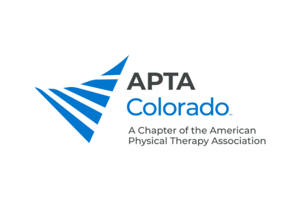 |
APTA Colorado | 22.50 | Expiring on December 30, 2025 |
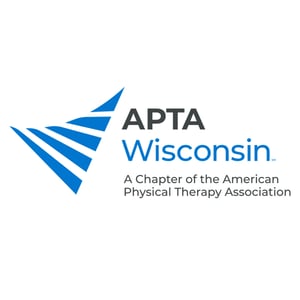 |
APTA Wisconsin | 22.50 | Expiring on December 31, 2025 |
| Board of Certification for the Athletic Trainer | 22.50 | Expiring on December 31, 2025 | |
| CATA | 9.00 | Expiring on December 31, 2025 | |
| CPTA | 2.25 | Expiring on February 13, 2026 | |
| Florida Physical Therapy Association | 22.50 | Expiring on December 31, 2025 | |
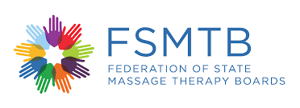 |
FSMTB | 22.50 | |
| Hawaii Board of Physical Therapy | 22.50 | ||
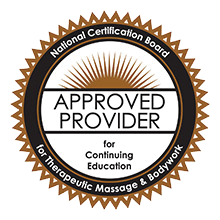 |
Louisiana Board of Massage Therapy | 22.50 | |
| Maryland Board of Physical Therapy Examiners | 2.25 | ||
| Minnesota Board of Physical Therapy | 22.50 | Expiring on February 12, 2026 | |
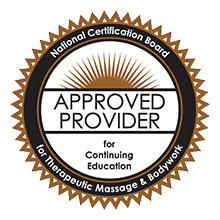 |
Mississippi State Board of Massage Therapy | 22.50 | Expiring on December 31, 2025 |
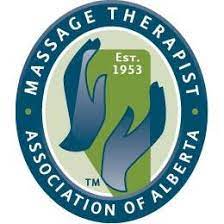 |
MTAA | 28.00 | |
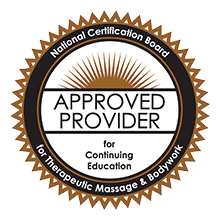 |
NCBTMB | 22.50 | |
 |
NCCAOM | 22.50 | Expiring on February 28, 2026 |
| Nevada Physical Therapy Board | 15.00 | Expiring on July 31, 2025 | |
| New Jersey State Board of Physical Therapy Examiners | 22.50 | Expiring on January 31, 2026 | |
| North Dakota Board of Physical Therapy | 22.50 | Expiring on December 31, 2025 | |
| Ohio Physical Therapy Association | 22.50 | Expiring on February 13, 2026 | |
| Oklahoma Board of Medical Licensure and Supervision - Physical Therapy | 22.50 | Expiring on December 31, 2025 | |
| Pennsylvania Bureau of Professional and Occupational Affairs - Physical Therapy | 22.50 | Expiring on December 31, 2025 |
Learning Objectives
- Identify and define the three types of nerve injury.
- Identify and define the effect of compression on nerve function.
- Identify and define the three types of nerve entrapments.
- Proficiently palpate local, terminal, and long tract nerves within the human musculoskeletal systems using an appropriate tension, depth, and motion to perform the treatment protocol.
- Effectively recall and differentiate symptom patterns and patient presentations from that of soft-tissue dysfunction and neural pathology.
Course Content
| Professional License Information and ART Policy Requirements | Module | ||
| Continuing Education Credit | Module | ||
| Welcome & Introductions | Module | ||
| Differential Palpation Videos | Module | ||
| Optional Videos Nerve Protocol Study Videos | Module | ||
| Pre-Credentialing Exam (Nerve) | Module | ||
| In-Person Attendance Verification | Module | ||
| Evaluation | Module | ||
| Hands-On Practical Exam | Module |
Chiropractors
Continuing education (CE) credit for Chiropractors in attendance of ART seminars is administered by the Northeast College of Health Sciences (Northeast College). You can access all Chiropractic approvals for ART (Seminar Type) seminars here: Northeast College of Health Sciences: Nerve
Physical Therapists
See the list of approved states/boards under the “Available Course Credits” in the "Overview" tab.
*Alabama, Idaho, Iowa, North Carolina, Oregon, South Dakota, Washington, and Wyoming do not require preapproval.
*Maine does not have Continuing Education requirements.
ART does not have preapproval from New York. A certificate of attendance will be provided to all attendees following the seminar.
Athletic Trainers/Therapists, Massage Therapists, Occupational Therapists, Acupuncturists:
See the list of approved states/boards under the “Available Course Credits” in the "Overview" tab.
- Identify and define the 3 types of nerve injury.
- Identify and define the effect of compression on nerve function.
- Identify and define the 3 types of nerve entrapments.
- Palpate the nerves of the brachial plexus, as well as their branches.
- Use Active Release Techniques to free the nerves of the brachial plexus, and its branches, from their entrapment sites by softening the soft tissues around it and facilitating nerve slide via Active Release Techniques.
- Palpate the nerves of the lumbosacral plexus, as well as their branches.
- Use Active Release Techniques to free the nerves of the sacral plexus, and its branches, from their entrapment sites by softening the soft tissues around it and facilitating nerve slide via Active Release Techniques.
- Correctly move each nerve from its shortened position to elongated position.
- Successfully differentiate between healthy and unhealthy tissue utilizing hands-on palpation techniques.
- Proficiently palpate local, terminal, and long tract nerves within the human musculoskeletal system using an appropriate tension, depth, and motion to perform the treatment protocol.
- Correctly state the movement action required to shorten and lengthen local, terminal, and long tract nerves.
- Adequately summarize the physiological methodology of ART’s Diagnostic Algorithm.
- Effectively recall common symptom patterns of neural pathology within the brachial plexus.
- Effectively recall common symptom patterns of neural pathology within the lumbosacral plexus.
- Recall the 3 types of nerves within the human musculoskeletal system.
- Recall the difference between the sequential steps and methodology for local, terminal, and long tract nerve treatment protocols.
- Properly select treatment protocols which help to reduce pain, improve ROM, and restore function for a patient/client to return to ADL, sport, or other desired activity outcome.
- Properly perform treatment protocols which help to reduce pain, improve ROM, and restore function for a patient/client to return to ADL, sport, or other desired activity outcome.
- Correctly perform a treatment protocol for a local nerve.
- Correctly perform a treatment protocol for a terminal nerve.
- Correctly perform a treatment protocol for a long tract nerve.
- Effectively recall and differentiate symptom patterns and patient presentations from that of soft-tissue dysfunction and that of neural pathology.
- Palpate, differentiate, and treat the median nerve tract.
- Palpate, differentiate, and treat the common median nerve entrapment sites.
- Palpate, differentiate, and treat the common radial nerve entrapment sites.
- Palpate, differentiate, and treat the common ulnar and phrenic nerve entrapment sites.
- Palpate, differentiate, and treat common nerve entrapments of the neck, shoulder, and upper arm regions.
- Palpate, differentiate, and treat common nerve entrapments of the thoracic region.
- Palpate, differentiate, and treat common nerve entrapments of the neck region.
- Palpate, differentiate, and treat common nerve entrapments of the thoracic, lumbar, and sacral regions.
- Palpate, differentiate, and treat common nerve entrapments of the sacral plexus and lower extremity.
ART Seminars consist of 80% or more hands-on practice and training, with attendees receiving immediate feedback from instructors and other attendees.
Seminar Schedule
Day 1, 2, & 3:
- 8:00 AM-12:00 PM: Protocol Review
- 1:00 PM-5:00 PM: Protocol Review
Day 4:
- 7:30 AM-12:00 PM: Testing
Included with registration
- ARTMan: Our iPad and web-based application includes a digital version of our manual plus exclusive video demonstrations of the protocols. ARTMan can be linked with the Visible Body Suite App (separate purchase) for more in-depth study. ARTMan is exclusively available to active ART Certified Providers.
- Paper Manual: Optional paper manual. (Free for attendees registering as New Certification/Student. Available as an additional purchase for Recertification attendees.)
Appropriate attire:
- Most of our seminars consist of hands-on practice on attendees. Wear clothing which allows for ease of movement so that fellow attendees may easily palpate and practice protocols on you. Athletic attire, shorts, yoga pants, t-shirts, joggers, athletic polo shirts and tops are most appropriate.
Testing:
- Recertification attendees will test on Friday and Saturday during the seminar on six protocols at a time determined by the instructor. With rare exceptions, all recertification testing will be completed by 5:00 PM on Saturday.
- New Certification attendees (including Students) will test on six protocols on Sunday morning beginning at 7:30 AM. Each test will take no more than 15 minutes. Attendees should plan to arrive no less than 15 minutes before their scheduled practical test and may leave as soon as they complete their exam. (Testing may end as late as 12:00 PM. Please plan accordingly).
Miscellaneous:
- Portable tables: At most seminars outside of Colorado Springs, we ask that attendees bring a portable table, if possible. As an incentive, you will be entered into a raffle for a $900 credit toward your next ART seminar if you bring a table. Look for more information in our post-registration emails.
Cancellation and Refund Policy
Review ART's Cancellation, Return and Seminar Transfer Policy and ART's Grievance Policy in their entirety here.
Participants may file a complaint by telephone or email:
Financial Disclosures
The following third-party products may be discussed during the seminar: Kinetisense 3D Motion Capture Software Application (the "App"). Purchase of the App is not required. Product discussion is for informational purposes only, to inform attendees of the nature and availability of the App and its potential use and benefits in practice. ART may receive referral compensation from Kinetisense, but no employee, officer, or agent of ART will sell or attempt to sell the App directly to attendees.
Special Needs/Accommodations Requests
For more information and special needs requests, please contact: info@activerelease.com